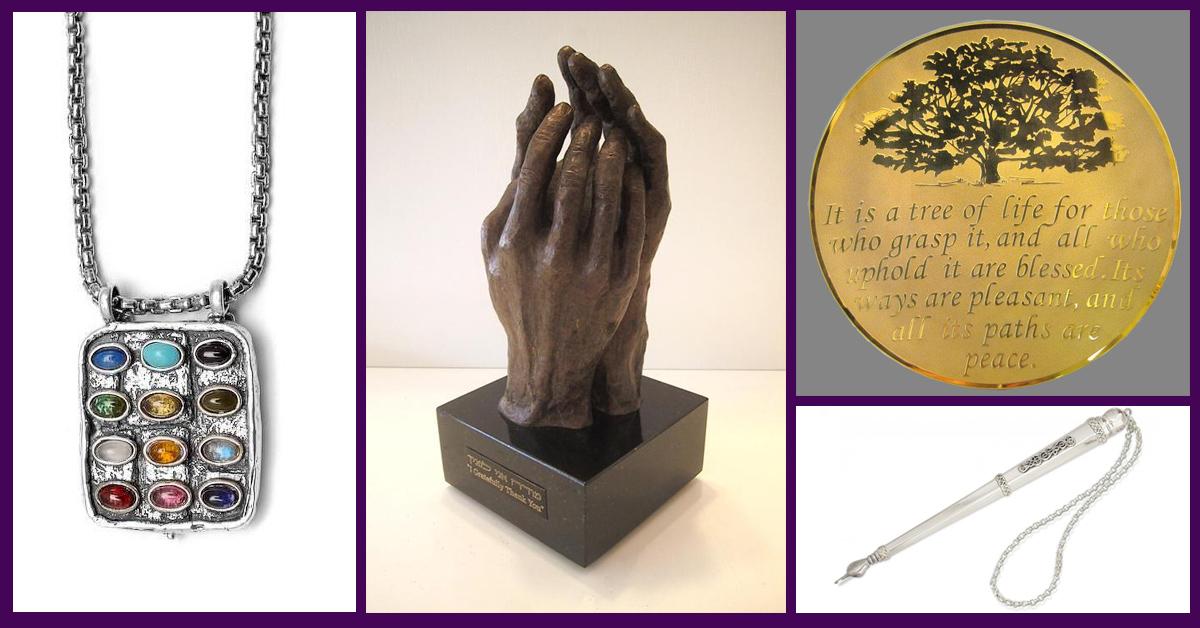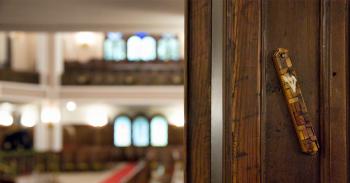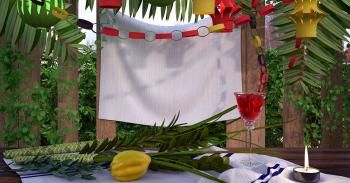
It has been a few thousand years since the days of the Torah, when the handy Israelites turned into the innovative jewish people we know today. Reading the stories of the Torah, our scripture, we see many expressions of the Israelites’ creativity, which has characterized us all through history. Looking for examples? We’ve gathered a few -
First to list here, but not the first to take place, was when Jacob disguised as Esau, using sheepskin to make his arms feel hairy and other not so pleasant materials to smell like an outdoorsman. This genius costume was probably one of the first cosplays to be documented in our people’s history.
Another great example is Joseph’s colorful coat, which was a marvel to look at. The coat was known all around and made his brothers so jealous of Joseph they felt they had to get rid of him.
An additional act of creativity, which was somewhat regrettable, was the golden calf. In an act of distrust, our ancient ancestors created the infamous golden calf. The runaway ex-slaves felt insecure when Moses took a while to come back from his session with our creator, and took it upon themselves to melt all their golden possessions to create a beautiful golden animal, to act as their new deity. Indeed creative, but got them in trouble.
The list of creative acts mentioned in the Torah goes on and on.
Reading the scripture conveys just how gifted the jewish people had always been. Our traditional stories describe the innovative ways our ancestors developed to handle challenges.
This type of creativity continued to characterize us throughout the years. As can be expected, it evolved, growing and developing as our people proliferated -
The first temple in Jerusalem was known as a beautiful structure, a true work of art - made of many wings, built from the finest materials of the time and full of light. The phrase to best capture the beauty of the first temple is probably this one: “He who has not seen the Temple in its full construction has never seen a glorious building in his life”. Makes us feel kind of sorry for not having the privilege of seeing it, yet :)
It is said that the sense of space one felt while walking into the temple was immense. It felt much bigger than it was, or looked from the outside. The high priest, the Kohen Gadol of the temple, wore the Choshen, the breastplate - beautiful stones which were holy and allowed him, the priest, to communicate with HaShem and the angels. To commemorate those days, where the temple and the Choshen were everyday elements of our lives, we include them in current works of art, like wall hangings and pieces of jewelry, like this one. Many works of art throughout history show Jerusalem in all its glory, the holy temple and the 12 stones of the Choshen.
It is told that Bezalel, the famous biblical artist, was appointed specifically by God to build the Tabernacle. Bezalel is known to have been a gifted creator, able to bestow beauty on to everything he touched. Were he alive today, we would probably refer to him as an artist who’s able to create on all mediums, as he was known to have created many and various works of art.
Looking at synagogues today, whether they were built in recent decades or centuries ago, like the ones that can be found in Europe, we notice their simplicity. The same clean look is also depicted in drawings describing older synagogues, so we realize this minimalism isn’t just a current fad. The reason for this is that the jewish house of prayer is not to be turned into a museum.
Lehavdil, on the contrary, walking into a big church, marveling at the art on the walls, floors and ceiling, can make us feel pretty bland, as we walk into a synagogue and see hardly any decorations. The jewish law tells us that synagogues are not to be adorned and are to be made beautiful only by their holiness.
And still, this heavy restriction on such a meaningful jewish establishment hasn't inhibited the development of creative minds within the jewish people.
All throughout history we see spectacular creations made by our people, even during times when it was prohibited to show any signs of judaism -
During the middle ages and renaissance, the jewish people endured many difficult days and years, where even lighting the candles of shabbat was enough to get a family severely punished. We can only imagine what heavy punishments faced a person who dared create and display jewish works of art.
But still, well hidden behind closed doors, creative minds worked relentlessly to maintain the spirit of the Hebrews, allowing us a peek into the lives and daily routines of those who carried the same traditions, many years before us. A fine example of a tradition that is probably as old as our prayers, is the Modeh Ani text, which we still say every morning, like the jews of the middle ages. Modeh Ani means - “I am grateful”, and saying it every morning is a sort of meditation - A lovely ritual to remind us how thankful we should be for everything we have, for our ancestors and history which led our people to where we are today. That’s why we especially appreciate this sculpture.
In addition to showing daily traditions, many works of jewish art throughout history portray stories from the Torah and bible. Starting from scenes of chaos at the creation of the world, through Adam and Eve in Gan Eden, moving on to Noah's arc, the tower of Babylon, Lot’s wife and so on, we all know the stories. The Torah provided many artistic scenes for creative minds to later depict -
Our history as a civilization, as human beings of this era, is defined by the numerous works of art created to portray stories from the Torah. Artists of all religions have shown us their view of ancient stories. Anyone reading this article now can probably think of at least three separate depictions of Moses splitting the sea, not including the famous movie, which is a timeless classic of its own.
We see that the Torah and bible inspired many artists through the centuries, basically infusing our lives with beauty and imaginative thoughts.
The way you and I imagine our patriarchs, is affected by those artists. Think of Avraham, our forefather. What does he look like? Where did that image come from? Is it from a drawing you saw at some point in your life? That’s exactly it - our roots, our ancient stories are the basis for an entire genre of art. And art is the visual basis we use to imagine our history.
So when we use the phrase - “Jewish art”, we don’t only mean works of art which were made by jewish artists. We also include the many works of art made around the world to honor and depict the timeless stories of the Torah and bible.
Jewish art, like all art, was made in many forms - drawings, sculptures, manuscripts, jewelry, songs, architecture, mosaic and more.
Trying to tie all jewish art together into a single knot, we see that it is almost impossible - jewish art is versatile, made of numerous styles and comes in all forms. One reason for this versatility is the diaspora
As a people, we would have much preferred not to have been kicked out of the holy land (twice!). But the harsh reality of being spread across the continents, had at least led to the positive outcome of making the jewish people soak up many flavours and colors, making jewish art as interesting as it is.
Jewish art from around the world reflects the different stories and histories of the 12 tribes, as they were distributed to many places, separated from one another and the beloved holy land.
It is fascinating to look at works of art made by jewish artists at the same time, but at different locations -
The jews of Europe told the same story as the jews of Africa, but in different colors and styles. These differences are rooted in the local atmosphere, laws and of course by which materials were available in every region.
The art made by Yemenite jews is known as exceptional -
Starting with song - Yemenite jews are known for their outstanding vocal abilities, and the historic reason for it is a wonderful example of how the local law shapes lives:
At certain times during history, Jews weren’t allowed to attend schools so that they remain illiterate. This was the islamic rule’s futile attempt at keeping the jewish population weak and powerless. The jews of that time found a great way to teach the general population to read, write and pray, without going to school - they memorized and sang the entire script of the prayer. Yemenite children were taught to sing the letters and prayers from a very young age, shaping many of the people into wonderful vocalists and strengthening their cognitive abilities along the way.
Yemenite jews were also known for making unique Jewelry and textile. Young brides among the jewish yemenites were adorned with complex outfits made of cloth and silver, with tall head gears and countless rings on each finger. This same style can still be found today, made by traditional artists who maintain the same style to commemorate their ancestors.
In another example of versatility, the effects of north african jewish art still resonates with the jewish people today -
The Hamsa, the palm symbol which symbolizes protection from the evil eye - Ayin HaRa, was originally an arabic symbol used by the local tribes of north africa, but it has made its way into jewish symbolism and has been a part of the jewish style for many years. Jews from all around the world enjoy wearing hamsa necklaces or hanging hamsa works of art around the house.
The blue eye, also originating in north africa, has the same meaning of keeping the evil eye away. This element is incorporated into many pieces of art and clothing, and even into Ketubahs like this one.
On the other side of the mediteranian sea lived the Jewish European artists, who are often known for their sculptures, writings and drawings.
Portraying jewish traditions like the Kohanim blessing - “Birkat kohanim”, into works of art was very common and has made its way down to our generation, like in this beautiful framed print. We can only assume how important it was for the jews of those times to create small depictions of jewish traditions, to keep the knowledge and faith alive. A small Bar Mitzvah sculpture like this one, was likely to be found passed from one generation to the next. In days where religious artifacts were best kept hidden, these sorts of items were fiercely protected, often being the sole symbol of Judaism in a person’s life.
Jews were persecuted all around the world, all throughout history. Their artistic style was heavily affected by the challenges and difficulties they faced in their daily lives.
The famous phrase Ani L’dodi was always known as a source of strength for our people, a pillar to lean on when times get hard. Ani L’Dodi Ve’Dodi Li, reminds us that HaShem has our back. We’re protected. Looking at the phrase this way, explains why it was so often incorporated into works of jewish art. Ani L’Dodi was and still is a source of solace for a jewish person seeking guidance. Beautiful framed prints like this one, were made through the ages to remind jews that their power lies in their faith.
Following the persecution and the fact that they didn’t choose to leave the holy land, we see much jewish art focused on the longing to return to the holy land. Many of the phrases we sing in our songs, describing our love for the land of Israel, were written by those jews in the days of the diaspora, as they wished they were able to return to their beloved country, like birds, spreading their wings and finding a new horizon.
Art can shape life just as much as life can shape art -
Some important mitzvahs have deeply affected jewish art. One of them is Tzedakah.
Tzedakah is the mitzvah to be charitable, a basic law for the jewish people who are told to be grateful and always share their happiness with those less fortunate.
During the days of the Torah, people had many ways to perform the mitzvah of Tzedakah, one of which was in the field, where farmers were told to leave off parts of their produce for those in need. Today, most of us are not farmers, but are still obligated to perform the important mitzvah of Tzedakah. That’s why it’s very common to see Tzedakah boxes in homes, synagogues and places of business. The Tzedakah box is a way to remind ourselves to thank HaShem for all the good we have - appreciate it by helping others.
Tzedakah is definitely one of the more beautiful mitzvahs, both in its meaning, and externally, as modern artists now make Tzedakah boxes in many fascinating styles: This pebble Tzedakah box, is a wonderful example of how life shapes art, and art ends up shaping life, both ours as the givers, and of others, who are in need.
We can’t simply finish this article without taking note of the written arts - the many songs and manuscripts written by jewish artists throughout the years -
Jewish writers, led by our great king Solomon, were often romantics.
Many of the scripts we read, can be interpreted as love songs for our significant other, or for the creator. Whichever way you choose to look at it, beautiful texts like the ones read during the wedding ceremony, the Chuppah, are indeed works of art and deserve a passage of their own. We read “I have found the one in whom my soul delights" and our hearts melt, which is why this heartfelt phrase has made its way into beautiful works like this framed print. As the people of the book, memorable texts are definitely our niche
This quick review of Jewish art, across history, origins and styles, shows us just how fascinating it is, with its many faces. Shalom House, as lovers of art, have gathered a wonderful selection of items of Jewish Art into this category for you to browse through, and get a sense of how widespread the world of jewish art is.
We hope you enjoy choosing your favorite items and brining a piece of the jewish people into your home.



